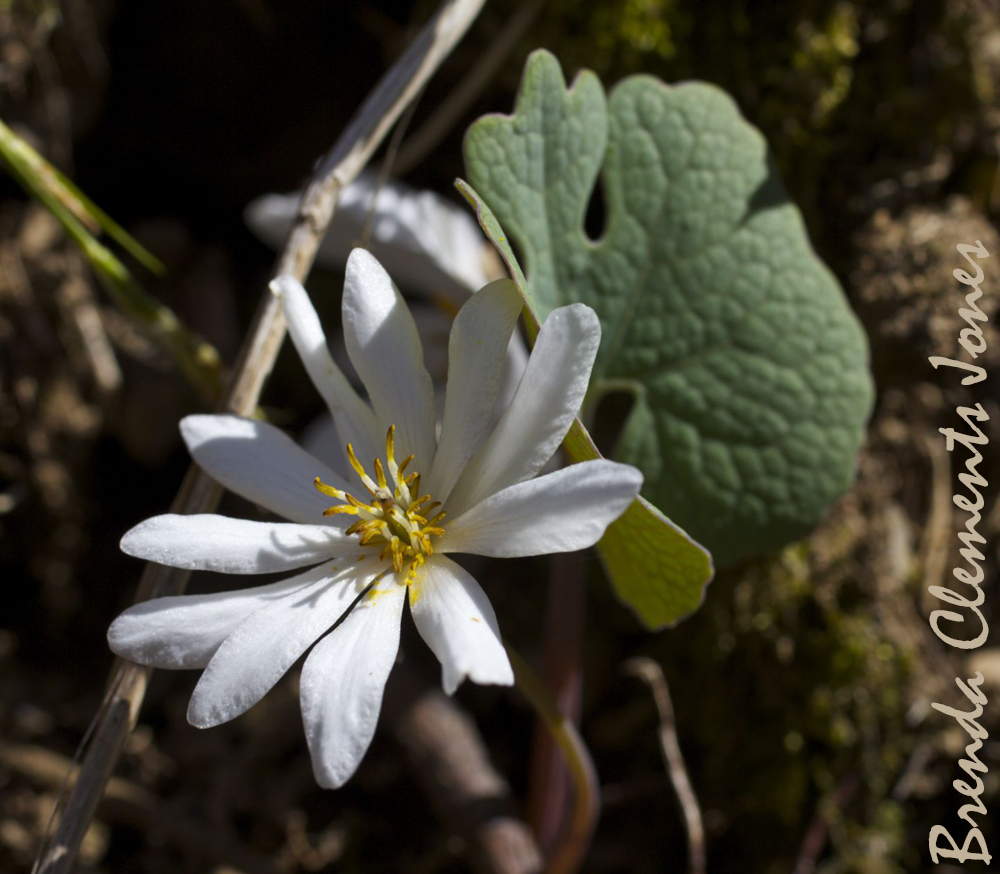
It’s hard for me to believe since I’ve still got snow on the ground, but spring is nearly here. At least meteorological spring. It arrives on March 1. The weather here is assuredly unpredictable. We’ll see what the month of March brings forth. Spring or more winter? But plants will be sprouting no matter. One of the plants I expect will greet me later in March is Bloodroot (Sanguinaria canadensis). A plant that’s native to eastern North America.

Take care when you’re out hiking, particularly when you aren’t on a well established trail. These little first sprouts of spring are not necessarily obvious.

Bloodroot emerges from the soil, stem carefully wrapped in a deeply veined dark purply leaf.

As the bud grows the leaf unfurls and turns to a rich green with a silvery-green ventral side. With each flower there is a single deeply lobed basal leaf. A leaf with five to seven lobes that grows to be three to five inches across.

The flower is a burst of eight to sixteen snow white petals centered with an oval yellow-green pistil which is topped by a pale yellow stigma. The pistil is surrounded by bunches of stamens with glowing yellow anthers. The blooms don’t provide any nectar but the pollen on the anthers brings bees, flies and beetles that pollinate the flowers.

And that pollination allows the seed pod to expand. Filling with seeds that have appendages called elaiosomes. Ants bring those seeds to their larvae. The larvae is fed the elaiosomes and the still intact seeds are discarded to the nest’s “trash room” which is the perfect place to start these seeds growing. This process which happens in many cases throughout the plant world is called myrmecochory. A weird/fun word which has become one of my favorites.
